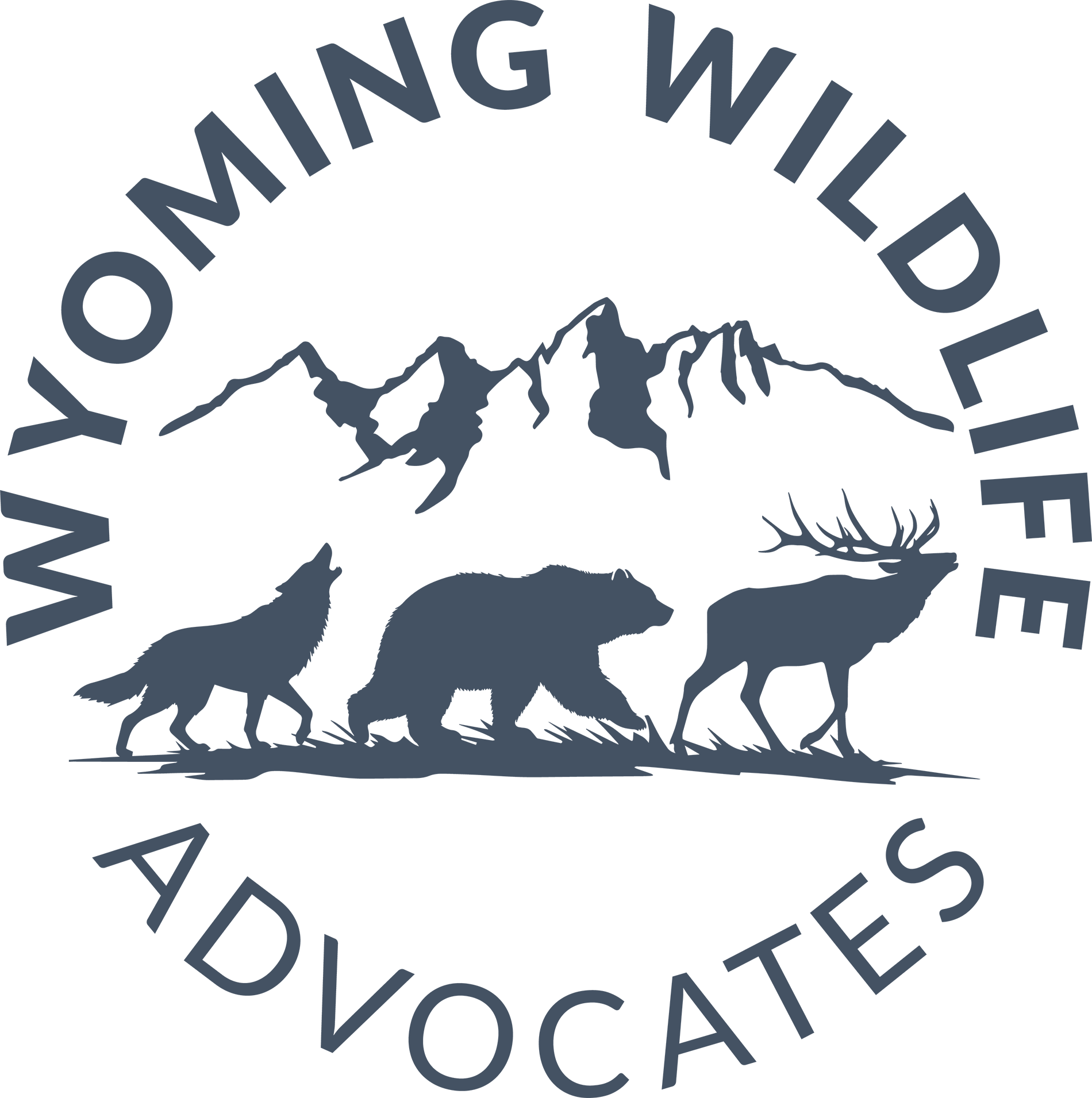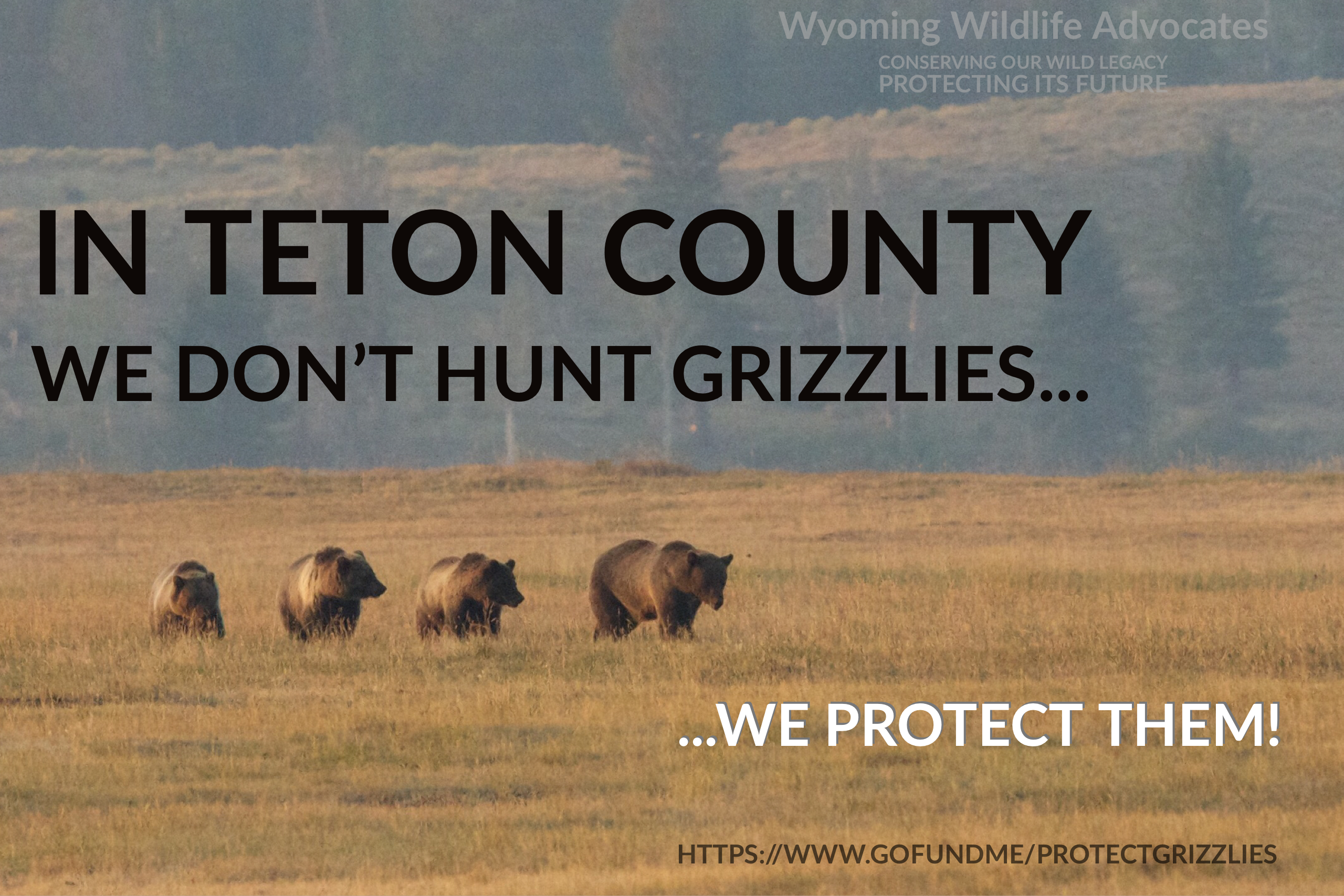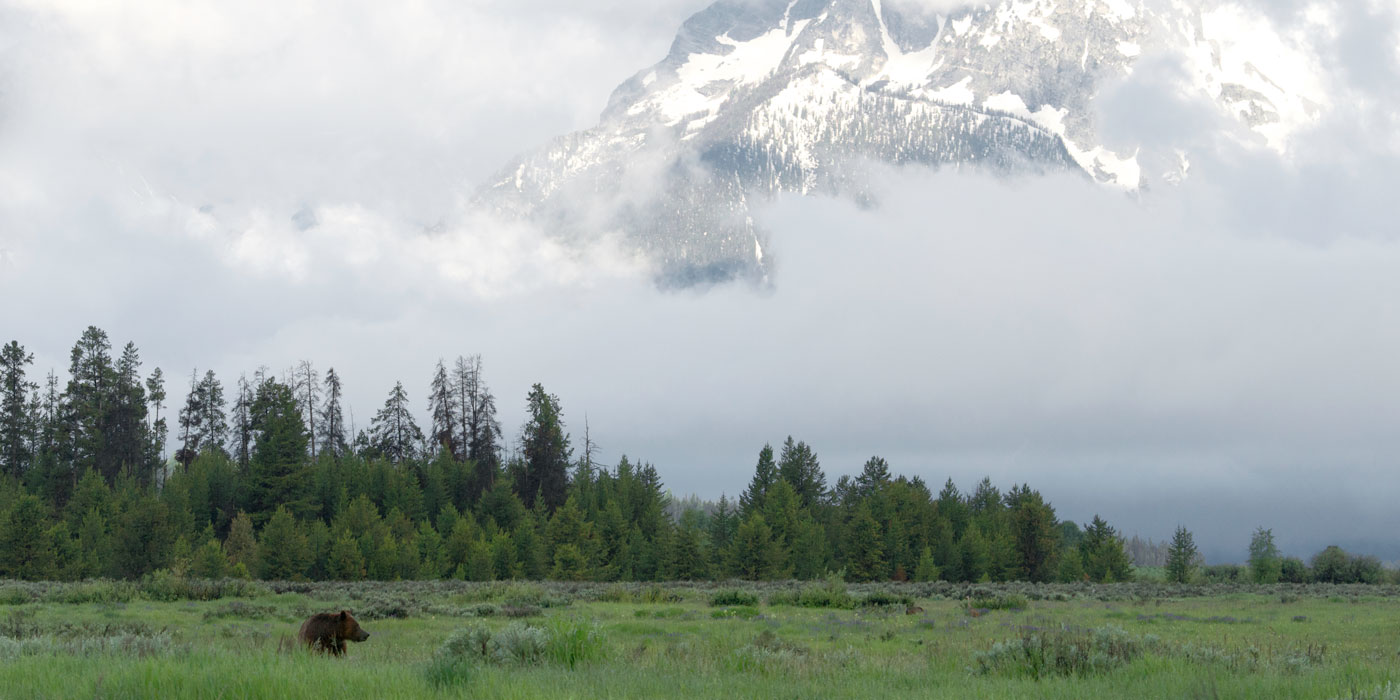The number of wolves killed that were reported in 2018 topped out at 81. The season was extended an additional month and began on September 1 this past year. Quotas were also raised in the Gros Ventre Mountains in hunt areas 8, 10, and 11. The map below depicts how many wolves were hunted in which hunt areas. Some hunt areas were combined in the official total from the Wyoming Game and Fish Department (WGFD), which explains why the map is slightly different from the map published by the WGFD. The total above along with the map does not show wolves that were killed by the agency due to conflicts. We will publish those numbers when the 2018 report is published.

Residents are required to report any wolf that is taken outside of the trophy game management area, however, it is doubtful that all get recorded. We are also skeptical that the number of wolves reported killed in the hunt areas is accurate due to the very prevalent shoot, shovel, shut up attitude in Wyoming. Game and Fish managers will count wolf numbers this winter. We will report those numbers when they are released.
Particularly concerning are the 38 wolves that were killed in areas bordering both Grand Teton and Yellowstone National Parks. Many of these were undoubtedly park wolves that are beloved by both residents and visitors alike. The Greater Yellowstone Ecosystem is one of the last places on earth to see bears and wolves in their natural habitats, wild and free. This brings visitors from all over the world and also attracts people to relocate to communities near the parks. Wildlife watching is a hundred of millions dollars industry in both Wyoming and Montana. Yet both of these states have declared an all-out war on wolves and continue to kill them in large numbers each year. Wyoming has returned to the days of the wild west when wolves and other predators were killed on sight for no other reason than existing. They are classified as predators in over 85% of the state and can be killed by any means at any time.
Many visitors have certain wolves such as the iconic Spitfire that they track and like to see when they are in Yellowstone. The Lamar Canyon Pack has been a favorite of wildlife watchers for many years. Now, with both ’06 and Spitfire killed by trophy hunters, the Lamar Canyon Pack has been pushed out of Yellowstone and has already been involved in conflicts with residents of Cooke City. They are young wolves with no leadership and are likely to be involved in future conflicts with humans.
The states operate on the assumption that wolf populations are sufficiently recovered, however, a closer look reveals they are anything but. A recent blog post by author and wolf advocate Rick Lamplugh offers some insight.
Fact Check: Has the U.S. Wolf Population Recovered?
As the US Fish and Wildlife Service and Congress slink around Washington conniving ways to claim that wolf populations have recovered and wolves should be removed from the Endangered Species list, I sit in Gardiner, Montana, at the north entrance of Yellowstone, wondering what “recovered” really means.
During the last eight years I’ve lived in or next door to Yellowstone’s wolf country. I’ve watched lots of wolves, talked with lots of experts, even written a best-selling book about wolves. The recovery of America’s wolf population matters to me.
About 6,400 gray wolves survive in the lower 48 now. Is that a recovered population? To answer that question, I hunted down historical records of gray wolf numbers.
A map in “Yellowstone Resources and Issues Handbook” shows that gray wolves once roamed all but seven of the lower 48 states. Today’s range is almost reversed: gray wolves are in only nine states: Oregon, Washington, California, Minnesota, Michigan, Wisconsin, Idaho, Wyoming, and Montana. Wolves cover about 10% of their historic range in the Lower 48. That doesn’t sound recovered to me.
But it does to the Fish and Wildlife Service; they want to delist gray wolves nationwide. The Center for Biological Diversity has sued to stop such delisting. The Center wants a national wolf recovery plan instead of national delisting. Such a plan would enable wolves to establish viable populations in areas with small, recovering populations, including California, Oregon, and Washington. The plan would also promote recovery in areas like the southern Rockies, Dakotas, and Adirondacks, which have wolf habitat but no wolves.
If wolves haven’t recovered their range, have they recovered their numbers? In an article in “Yellowstone Science” historians Lee Whittlesey and Paul Schullery report the results of analyzing many historical records. They found that naturalist Ernest Thompson Seton estimated about two million wolves roamed North America and northern Mexico before the arrival of Europeans. They uncovered a record of scientists that used DNA testing to estimate that 380,000 wolves lived in the western US and Mexico prior to their eradication in the early 1900s. Today only about 2,200 gray wolves survive in the American West. Surely, that’s not recovered.
The picture isn’t much prettier in Yellowstone, a place famous for wolves. Whittlesey and Schullery looked at the historical wolf population in and around the park and determined that wolves were once “widespread and abundant.” Today about 100 wolves are protected in Yellowstone—and liable to be shot legally when they step paw outside the park. Or illegally while within the park as the Canyon alpha female was.
The historians also found records that several hundred thousand wolves once roamed the region that would become Montana. Today, about 900 wolves manage to avoid Montana’s abundant traps and guns. Recovered?
Whittlesey and Schullery quote those DNA scientists as recommending more ambitious restoration in the West, an effort that “…would restore wolves to past population sizes and enable them to significantly influence the dynamics of the Rocky Mountain ecosystem.”
Scientists have shown how the presence of wolves helps the ecosystems where they are allowed to survive. Given continued protection they would help improve even more ecosystems. I think that more restoration—more protection—sounds like a good goal. Much better than delisting and the inevitable slaughter of wolves that will surely follow.
Other Fact Checks:
Are Wolves Ruthless Killing Machines?
Do Wolves Decimate Game Hunters Want?
Considering that wolves are nowhere near recovered across the U.S. and occupy only a small amount of territory in Wyoming, the fact that Wyoming allows them to be wantonly killed in most of the state is egregious, to say the least. One thing that goes unnoticed and unquantified is the ecological benefit wolves provide to the ecosystem. Wyoming citizens are being cheated out of the value of wolves as a keystone species that has a significant impact on other species and habitats. Healthier ecosystems follow wolves wherever they go. We are putting resources into “fixing” habitats when wolves and bears can do the job for free.
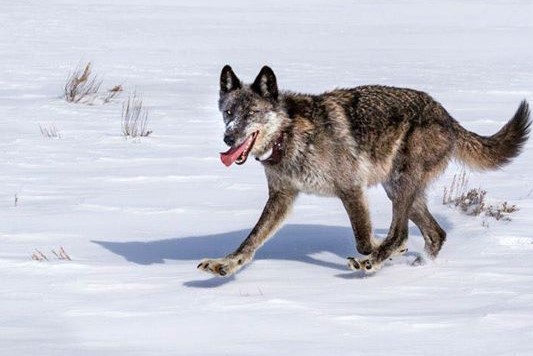
Photo: Spitfire by Mark Steven Perry, Bridger Peak Photgraphy
